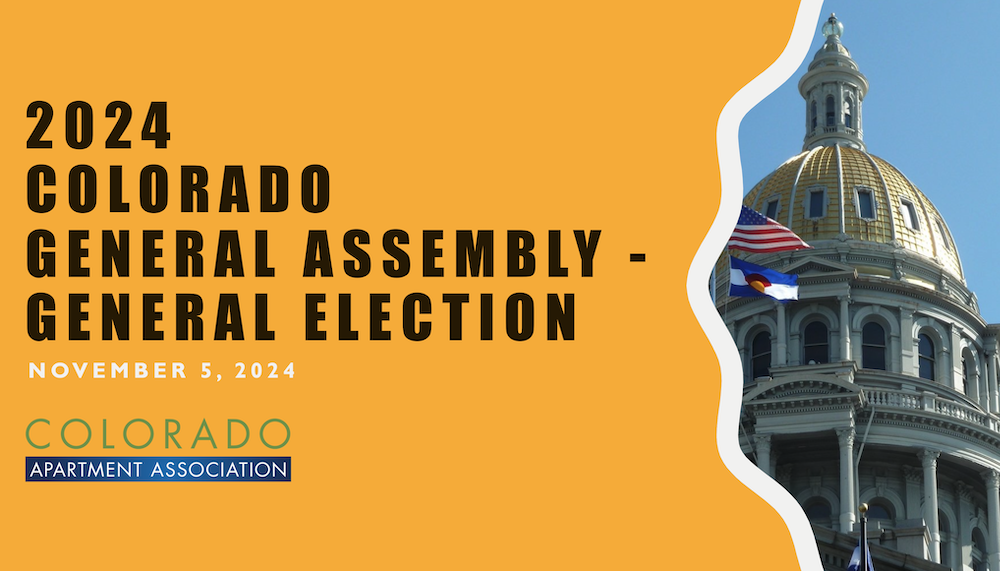Understanding What's at Stake in the 2024 General Election
Many of us have the impression of Colorado being politically middle of the road. However, the 65 member Colorado House is currently composed of 46 Democrats and 19 Republicans. The 35 member Colorado Senate is currently composed of 23 Democrats and 12 Republicans. The Governor is also a Democrat. This overwhelming party advantage makes Colorado the 4th most lopsided state in the nation.
In addition to this extreme partisan imbalance, Colorado also has the highest level of “polarization” between the two parties in the country, Two Decades of Polarization in American State Legislatures, Journal of Political Institutions and Political Economy, 2022 343-370.
Polarization is measured by the frequency with which 5% of the members of one party vote with 95% of the members of the other party. Polarization is on the rise in most states, but its growth in Colorado has been uniquely high. Since 2016 Colorado has been the most polarized state in the nation (surpassing California). Simply put, Colorado’s elected officials are overwhelming Democrats and our officials are less moderate than most.
2024 Elections: Democrats Lead The Way, But More At Stake Than A Simple Majority
As Colorado gears up for its upcoming General Assembly elections in November, there is little doubt that Democrats will maintain control of the House of Representatives and the Senate. The only question is whether the Democrats will be able to maintain their supermajority in the House and pick up one seat in the Senate to reach supermajority status.
Why Does Supermajority Status Matter?
A supermajority in the legislature gives the ruling party three advantages: (1) the ability to refer constitutional amendments to the ballot without opposition support, (2) the power to override Governor Polis' vetoes on progressive legislation that negatively impacts business interests, and (3) more majority party seats on committees.
Key Senate Races
Democrats need only one more seat to achieve a supermajority in the Senate. 18 seats are up this cycle, of which 10 are solid Democrat seats, 3 are solid Republican seats, and 5 are competitive seats. The 5 competitive and targeted races:
- SD5 (7 Western Slope Counties) - Cole Buerger (D) vs. Marc Catlin (R)
- SD6 (14 SW Colorado Counties) – Vivian Smotherman (D) vs. Cleave Simpson (R)
- SD12 (El Paso, Teller Counties) – Marc Snyder (D) vs. Stan VanderWerf (R)
- SD13 (Adams, Weld Counties) – Matt Johnston (D) vs. Scott Bright (R)
- SD16 (Arapahoe, Jefferson Counties) – Incumbent Chris Kolker (D) vs. Robyn Carnes (R)
Key House Races
The Republicans need to pick up 3 seats to end the Democrats’ supermajority. Of the 65 races, 35 are solid Democrat seats, 19 are solid Republican seats, and 11 are competitive seats. Of those 11 competitive seats, Republicans have targeted 5 races:
- HD16 (El Paso County) – Incumbent Stephanie Vigil (D) vs. Rebecca Keltie (R)
- HD19 (Boulder, Weld Counties) – Jillaire McMillan (D) vs. Dan Woog (R)
- HD25 (Jefferson County) – Incumbent Tammy Story (D) vs. George Mumma
- HD43 (Douglas County) Incumbent Bob Marshall (D) vs. Matt Burcham (R)
- HD50 (Weld County) Incumbent Mary Young (D) vs. Ryan Gonzalez (R)
Voting Strategy
Our members have widely divergent political outlooks. Surveys of membership and leadership of the Association consistently indicate our members are fairly evenly divided between Republicans and Democrats. If you are an exclusive party-line voter, there is likely not much in this piece that will alter your voting decisions.
The primary strategy of the Association is to achieve more balanced representation in both the House and the Senate so that it is more difficult for any single political party to enact significant legal changes. Regardless of political philosophy and persuasion, divided government allows us to more easily prevent harmful legislation. Balanced government is good for our industry.
The Association relies on universal Republican support of our issues and moderate Democrats that can be persuaded to sometimes cross party lines and support pro-business policies. Pursuing these goals, the Association makes political contributions to moderate Democrats in their primary races against more extreme opponents and supports Republican candidates in races where there is a possibility of success. The Association has spent more than $500,0000 in this election cycle to fund industry supportive candidates.
We had great success in supporting moderate Democrats during the Spring primaries (winning 8 out of 10 of our targeted races) and contributed approximately $150,000 in direct campaign contributions pursuing that goal. There's not much more these candidates need from the Association in the general election because all of these candidates are in districts so solidly controlled by Democrats that support in the general election is largely irrelevant.
Why the CAA Voter's Guide Matters
Click the link below for a list of all the Senate and House Districts that will be on the ballot this year. In these districts we have placed asterisks following the names of the candidates that have received Association financial support in their campaigns (* indicates modest financial support, ** indicates significant financial support). Democrat candidates are highlighted in blue and Republican candidates are highlighted in red.
If the District is shaded blue, it is so heavily Democrat that the Republican has no reasonable chance of being elected. If it is shaded red, it is so heavily Republican that the Democrat has no reasonable chance of being elected. Sadly, in these Districts it really doesn't matter much whether you vote or not.
In the Districts without shading, the outcome is at least semi competitive and your vote has meaning. A vote for any candidate with a double asterisk is consistent with the Association's contribution strategy, but not the goal of achieving a more divided and balanced state government. It can never be ignored that 100% of Republicans votes with us on issues 100% of the time.
Click here to Download the Voter Guide

